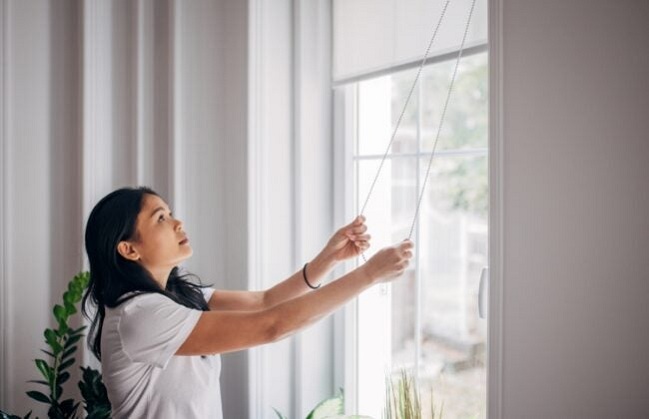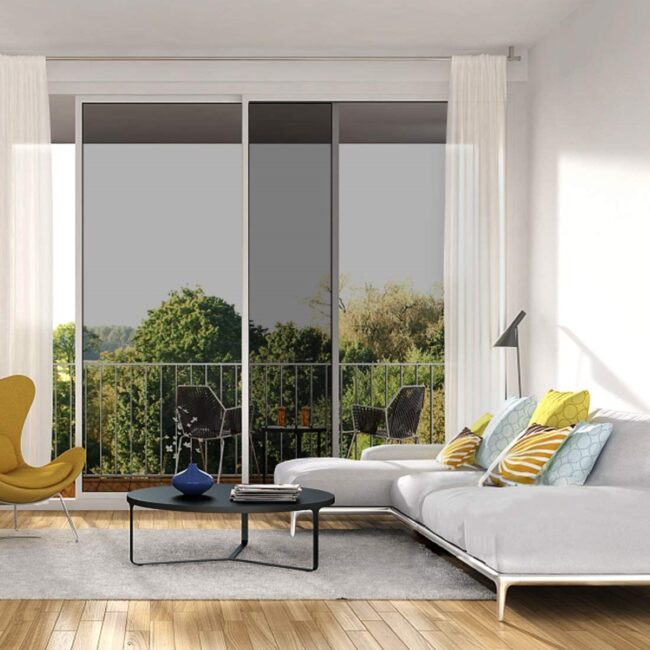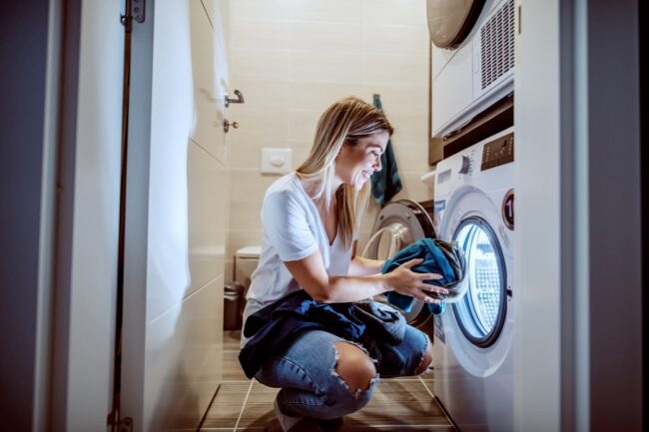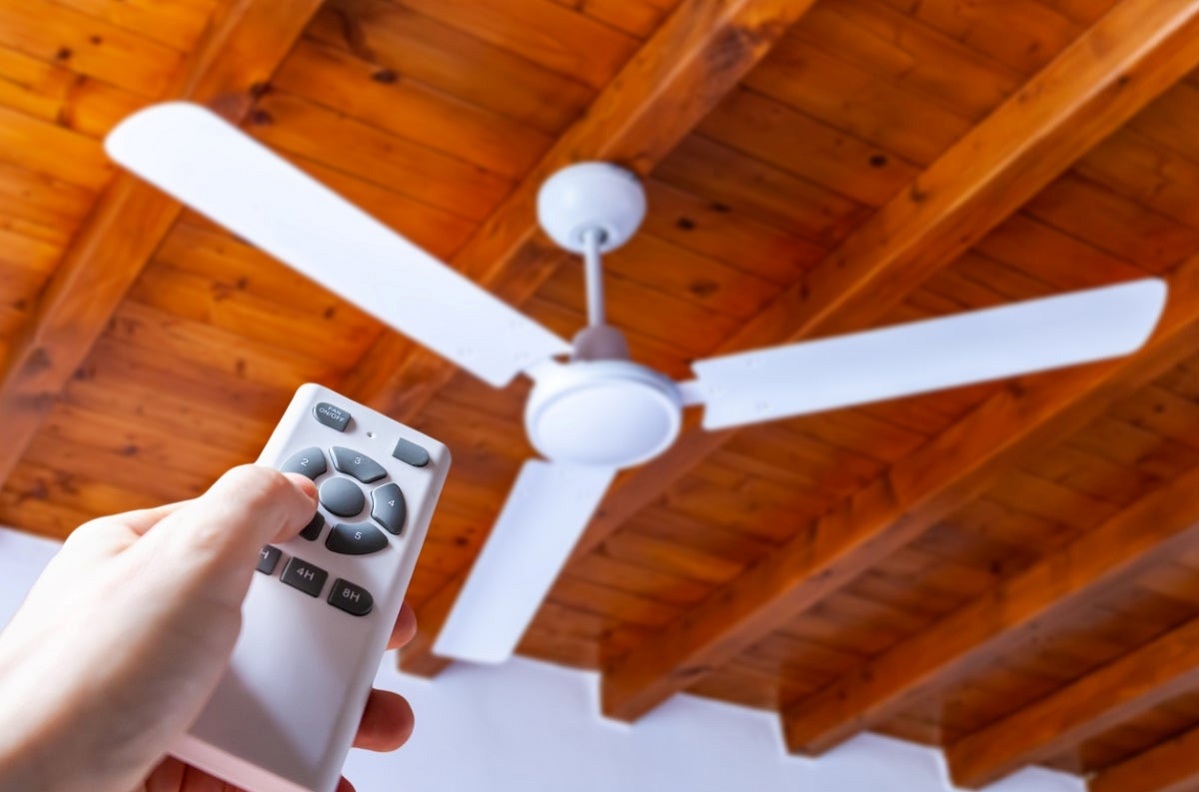While air conditioning is a popular choice for beating the heat, it’s not always a feasible option. Whether you’re facing a power outage, dealing with a malfunctioning AC unit, aiming to cut down on electricity costs (AC units can spike bills by over 40 percent!), or striving to minimize your carbon footprint, there are still effective ways to stay cool without relying on AC. Discover these 10 ingenious tricks that can help you maintain a comfortable temperature indoors during scorching summer days.
Install a ceiling fan
Embrace your ceiling fans as your summer allies. Ensure they spin in a counter-clockwise direction, effectively circulating cooler air from the floor upwards. When night falls, strategically place a box fan in an open window to usher in refreshing outdoor breezes. These simple adjustments can work wonders in keeping your indoor space comfortably cool.

Cook your meals al fresco—or don’t cook at all
Avoid turning your kitchen into a sauna by minimizing oven usage. Choose outdoor grilling for your meals or opt for cold dishes like salads and sandwiches during the sweltering months. When using the stove is unavoidable, rely on the range hood fan to efficiently expel the hot air, preventing it from infiltrating your living spaces. By making these culinary adjustments, you’ll not only keep yourself cool while cooking but also maintain a more comfortable indoor environment.

Keep the blinds closed
Shield your home from the scorching midday sun by ensuring curtains and blinds are drawn shut. This simple step prevents the influx of heat through windows and doors. As evening descends and temperatures cool, throw open the windows to welcome the refreshing night breeze into your living space. By employing this strategy, you’ll effectively manage indoor temperatures and create a more comfortable atmosphere throughout the day and night.

Blow a fan over ice
Enhance the cooling power of your floor or portable fan with a simple trick: Place a metal bowl filled with ice in front of the fan. This ingenious method ensures that the fan blows air over the ice, creating an extra-chilled breeze directed towards you. For those seeking an even more effective solution, consider crafting a DIY air conditioner using a 5-gallon bucket. These creative strategies will help you beat the heat and enjoy a comfortably cool environment without relying on air conditioning.

Allow Mother Nature to help block the summer sun
Harness the natural cooling power of trees by strategically planting them near your home. Opt for leafy deciduous trees that offer shade during the scorching summer months and allow sunlight to filter through once their leaves drop in winter. While tree planting might not yield immediate results, it’s a long-term investment in a cooler home. If time isn’t on your side, explore quicker options like installing awnings or a shade sail on the sunniest side of your house. These measures provide effective alternatives to air conditioning, helping you maintain a comfortable indoor temperature while embracing nature’s cooling solutions.

Eliminate unnecessary heat sources
Cut down on heat-producing sources within your home to keep the temperature in check. Unplug power strips, appliances, and phone chargers when not in use, as they can generate extra heat through electrical outlets. Swap out incandescent bulbs for energy-efficient CFL or LED options that emit less heat.
If you typically park your car in the garage, consider leaving it outdoors for a while after driving to allow the engine to cool off before bringing it inside. By minimizing heat-generating factors, you’ll create a cooler environment indoors without relying on air conditioning.

Add a screen door
Combatting both heat and stuffiness is essential for a comfortable living space. Enhance ventilation by adding a screen door to your front or rear entryways. Capitalize on the cooler hours, such as early morning and twilight, to open doors and let refreshing air circulate through your home. This simple strategy can effectively maintain a cooler and more enjoyable indoor environment without relying on air conditioning.

Block out the sun with window film
As mentioned earlier in our discussion about curtains and blinds, another effective way to curtail indoor temperature rise is by limiting sunlight penetration. Besides drawing your window treatments closed, you can employ heat-blocking window film for added insulation. WPCTEV’s privacy window film, for instance, adheres to your window panes, obstructing both infrared and UV rays to minimize heat entry. This film’s mirror-like finish enables outward visibility while preventing outsiders from peering in.
This heat-blocking film carries the added advantage of retaining warmth indoors during colder months. It utilizes a static attachment method rather than adhesive, simplifying both application and removal processes. By incorporating such window film, you can effectively manage your home’s temperature, enhancing comfort year-round while also reducing the need for excessive cooling measures.

Open interior doors and windows to increase airflow
Ensuring optimal air circulation within your home is crucial for maintaining a consistently comfortable temperature. A simple practice like keeping interior doors open can facilitate the even distribution of air and eliminate potential hot spots. During the cooler nighttime hours, take advantage of the natural breeze by opening windows strategically.
For enhanced effect, consider the safe option of simultaneously opening windows on opposite sides of the room or house. This technique harnesses cross ventilation, allowing fresh air to flow through and effectively regulate the indoor environment. By embracing these practices, you can create a more pleasant living space without relying solely on air conditioning.

Wash and dry your clothes at night
Beyond the oven, other household appliances can also contribute to raising indoor temperatures. For instance, clothes dryers emit heat generated during the drying process into your home. Similarly, dishwashers operate at temperatures ranging from 120 to 155 degrees Fahrenheit, adding warmth to your living space.
Dryers, in particular, generate approximately 130 degrees Fahrenheit of heat while consuming around 3 kilowatts per hour. This energy consumption is nearly comparable to that of a central air conditioner. Although avoiding the use of these appliances altogether might not be feasible, you can minimize their heat impact by running them during the cooler nighttime hours. Additionally, in some regions, electricity rates are lower during off-peak hours, providing further incentive to schedule appliance use accordingly.


